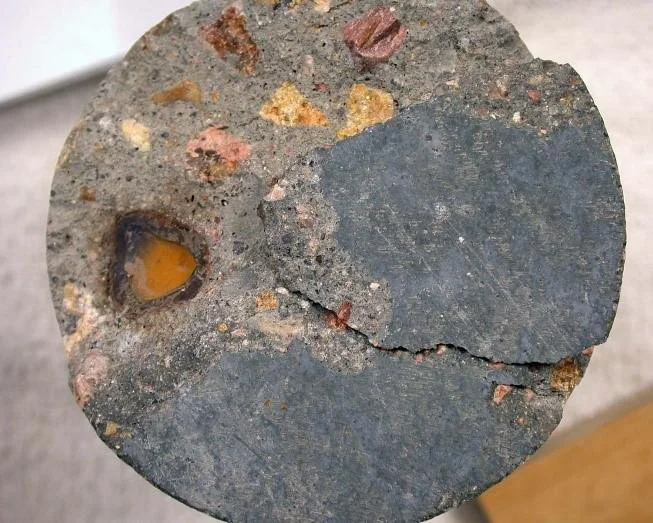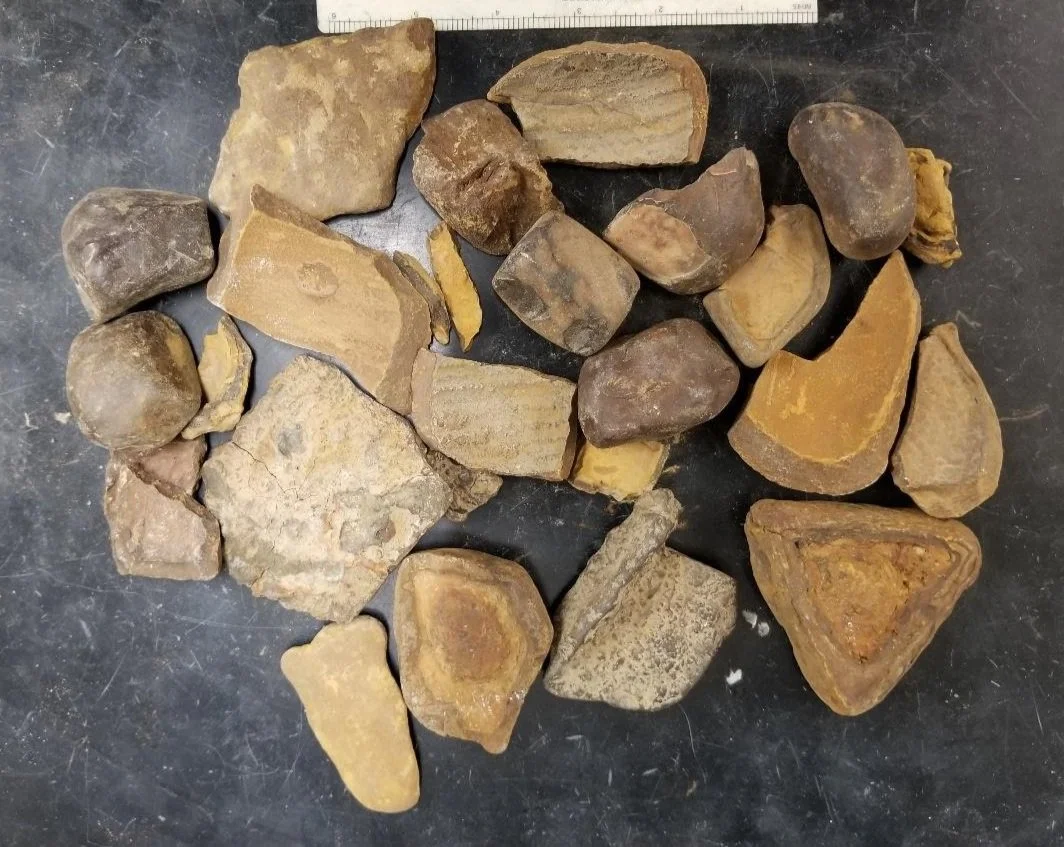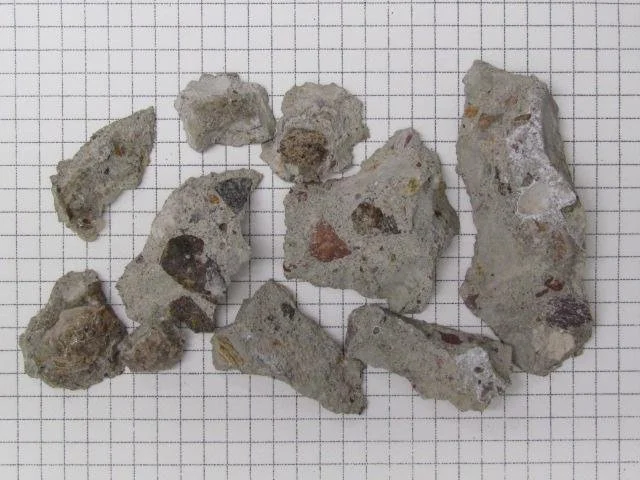How Aggregates may be affecting your concrete quality & what to look for
Concrete quality can suffer due to deleterious or contaminated aggregates.
Staining of concrete surface can be a sign of contamination or aggregate issues.
Core sample, showing a significant ironstone pop-out.
You might find a variety of visible damage present in finished concrete such as; freeze-thaw, pop-outs, D-cracking or surface staining, this type of damage is often an aggregate issue.
Other less visible aggregate issues, stemming from reactivity can also impact concrete longevity and strength.
Some aggregate types are not durable in a freezing and thawing environment.
Aggregates including low-density chert, ironstone and other porous rock types, can cause deleterious expansion of concrete.
This pop-out on the surface of a concrete sidewalk in Chicago, is caused by porcellanite particle, a soft, porous, lightweight form of chert.
Ironstone aggregate: These kinds of aggregates contain a microporous structure that can become critically saturated and freeze, resulting in pop-outs & D-cracking of concrete surfaces.
The phenomenon of damaging ASR in concrete
Prescott Petrographics Stereoscopic examination of ASR : High magnification view of concrete undergoing a damaging alkali-silica reaction (ASR) shows a void filled with secondary gel from the reaction between pore solution alkalis and reactive aggregates.
Alkali-silica reaction (ASR) can lead to long-term failure of concrete structures, through deleterious expansion from the hydration of secondary gels caused by the reaction. ASR can break the concrete from within.
4 factors of ASR reactions:
The presence of reactive aggregates:
The presence of pore solution alkalis
The presence of portlandite (CaOH) in the concrete
The availability of moisture.
Without reactive aggregates ASR does not occur, even if other factors are at work in the concrete. The amount of reactive aggregates is important and varies with different rock types.
Damaging ASR can be identified with Petrographic testing.
Examples of Concrete pop-outs, shown in this image with a quarter-inch grid background. These are the types of acid volcanic rocks that can lead to alkali-silica reaction (ASR) damage in concrete, documented in a C295 petrographic exam.
Experiencing freeze-thaw damage, D-cracking, or pop-outs in your concrete?
Get an ASTM C295 test: this includes an XRD examination for accurate, industry standard aggregate reports- that will stand up to legal scrutiny.
Prescott Petrographics has on-site equipment for fast & accurate XRD testing + 20 years experience
Unlike most labs, our aggregate testing always includes an evaluation of the fines, giving you complete results.







